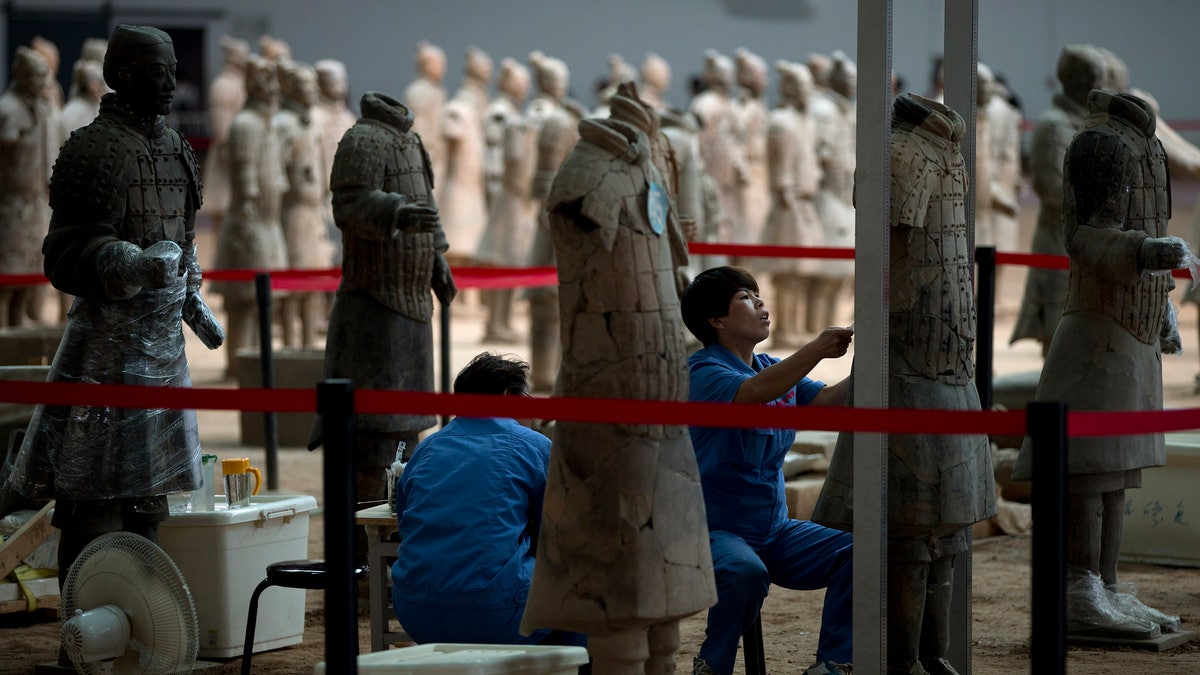
File photo. (AP Photo/Andy Wong, File)
BEIJING – China is expanding the ranks of the famed Terra Cotta Warrior army with new excavations expected to yield hundreds more of the ancient life-size figures.
The museum overseeing the vast mausoleum of China's first emperor says it began work March 30 on the tomb's No. 2 pit that is smaller in scale but believed to be richer in archaeological value than the already excavated No. 1 pit.
Along with 1,400 warrior and horse statues, the pit is believed to contain 89 war chariots and 116 mounted soldiers, offering invaluable insights into the military culture of the Qin dynasty, the museum said in a statement on its website.
"The No. 2 pit contains the true essence of the Terra Cotta army," the museum's former curator was quoted as saying.
Discovered in 1974, the army is one of China's biggest tourist draws, attracting hundreds of thousands of visitors each year. In recent years, the warriors have joined the giant panda as a tool of Chinese "soft power," with several batches being exhibited overseas to enthusiastic crowds.
The army was built to guard the tomb of the first Qin emperor, Qin Shi Huang, who died in 210 A.D. after conquering much of what is now modern China.
In all, the tomb's three pits are thought to hold more than 8,000 figures of archers, infantry soldiers, mounted cavalry, horse-drawn chariots, officers, acrobats, musicians and others.
The pits is adjacent to the emperor's sprawling mausoleum that lies under a 250-foot mound and remains un-excavated as experts debate the pros and cons of doing so.
Ancient accounts tell of a huge complex of chambers, including underground rivers filled with flowing mercury, along with the remains of craftsmen and imperial concubines sealed alive in the tomb with the dead emperor.
The Terra Cotta statues weigh about 400 pounds each and range in height up to 6 feet to 6 feet 5 inches depending on rank. Generals are the tallest.
Originally brightly painted, they are intricately detailed with armor, top knots, weapons and boots. No two figures are alike, and craftsmen are believed to have modeled them after a real army.
A ruthless figure of fear and awe in Chinese history, Qin built an extensive system of roads and canals along with an early incarnation of the Great Wall of China while unifying measurements and establishing a single written language, currency and legal statutes.
